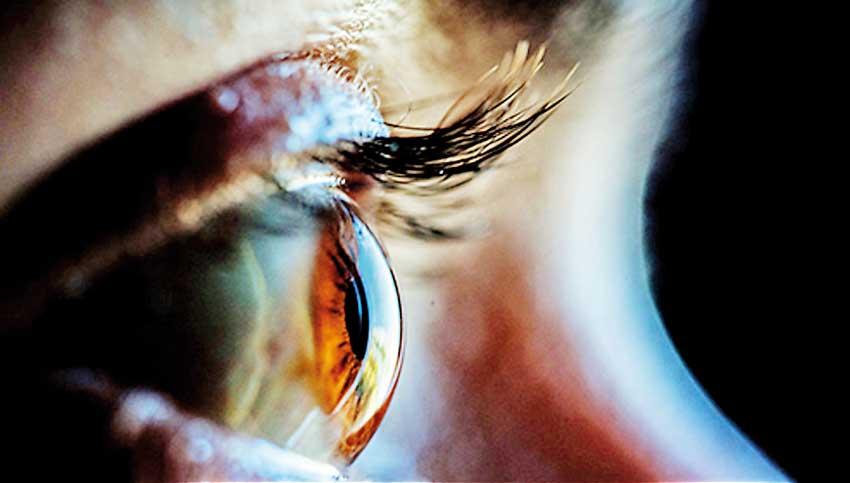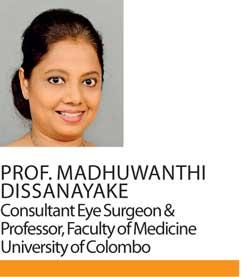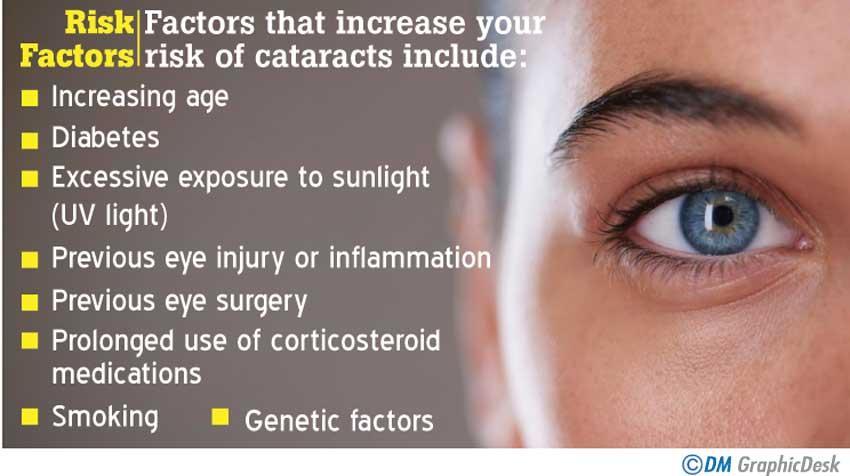

“Cherished like the apple of his eye” – that figure of speech underscores the huge importance we place on our sense of sight. Eyes are precious to us. With that in mind, “The World Sight Day 2020” was celebrated yesterday (08) globally under this year’s theme, “Hope In Sight”.
According to the World Health Organisation (WHO) the World Sight Day, held on the second Thursday of October every year, aims to focus global attention on vision impairment and blindness. The International Agency for the Prevention of Blindness (IAPB) declared that more than a billion people cannot see well, because they don’t have access to glasses. “Let’s find the solutions to ensure that everyone, everywhere has access to sight. Let’s pledge to spread the message of #HopeInSight,” the IAPB said. Understanding the importance of awareness, Daily Mirror spoke to Professor Madhuwanthi Dissanayake, Consultant Eye Surgeon & Professor, Faculty of Medicine, University of Colombo to gain an insight on vision impairment and eye health.
Cataract
“Cataract is the commonest cause of blindness worldwide but it is reversible and the vision can be fully restored after treatment,” Prof. Dissanayake explained. Cataract is the clouding of the normally clear lens of the human eye. When the lens is opaque, it prevents the lens from sending clear images to the retina. This causes a gradual loss of vision in patients.
Risk Factors
Factors that increase your risk of cataracts include:
- Increasing age
- Diabetes
- Excessive exposure to sunlight (UV light)
- Previous eye injury or inflammation
- Previous eye surgery
- Prolonged use of corticosteroid medications
- Smoking
- Genetic factors
Symptoms and Signs
- Clouded, blurred vision
- Sensitivity to light and glare (for an example, light from incoming vehicles)
- Frequent changes in eyeglass or contact lens prescription
- Fading or yellowing of colours
For people who have cataracts, seeing through cloudy lenses is a bit like looking through a frosty or fogged-up window. “Pain in the eye, Irritation in the eye, redness in the eye, tearing in the eye are not symptoms of cataract. But if you neglect cataract it will advance into mature cataract which can cause lot of complications,” Prof. Dissanayake explained. Mature cataract may lead to pain and redness in the eyes and the pressure in the eye may be increased. According to her, at that stage it will be difficult to perform a normal cataract surgery and insert an intra-ocular lens. “Therefore one should not wait until you come to the last stages as early diagnosis and treatment is the key to full restoration of your eye sight,” she commented.
Treatment
Proven treatment for cataract is surgical treatment. “The only proven permanent treatment is surgery. Eye drops do not provide a permanent solution,” Prof. Dissanayake emphasised. “Cataract surgery is the commonest surgical procedure carried out in the world and it is considered to be the most successful surgery because the vison can be restored in most of the patients. It involves the removal of the natural lens of the eye that has developed an opacification and its replacement with an intraocular lens” she explained.
During initial stages, cataract can be managed by using spectacles. However, surgery is the only permanent solution. The indication for surgery is the need of the patient. “It can be performed during early stages of cataract as well,” the professor explained.
After surgery three main eye drops (Antibiotic eye drops, Steroidal eye drops and a Non- steroidal anti-inflammatory eye drop) must be administered regularly as prescribed by one’s surgeon for a period of one month. “Don’t let the eye get exposed to dust, trauma, and any injury during this time period and Diabetes has to be kept under control,” Prof. Dissanayake said.
Glaucoma
The professor stated that Glaucoma was an optic nerve disease associated with eye pressure. It is the second commonest cause of blindness and is not reversible. Therefore it needs to be diagnosed early. It is commonly seen in people with a family history of glaucoma. “Usually it is done at the age of 40 when you check for near vision problems,” she said.
During diagnosis, eye pressure is checked and a back of the eye examination is carried out where the optic nerve is examined for nerve damage. Patients may not experience any symptoms until they go blind with advancement of the disease and therefore it is called “the silent thief of sight”.
Refractive errors
Prof. Dissanayake explained that refractive errors were the commonest cause of visual impairments. They include short sightedness, long sightedness and presbyopia. “These can be readily corrected using spectacles,” she said.
Tips for keeping your eyes healthy
nHave regular eye examinations- “If you have any symptoms with regards to the eye, like tearing, flashes, gradual loss of vision, get your eyes checked. All diabetes patients must get their eyes checked at the time of diagnosis of Diabetes and annually afterwards.
- If you have a relation with glaucoma, go and get our eyes checked.
- If cataract surgery is done for one eye, go and get the other eye checked about 6 months after surgery.
- Get children’s eyes checked between 5-6 years of age when they learn how to read numbers. It will be possible to correct any errors using spectacles if they do so. If not it will remain untreated for a long time and it’s hard to treat the condition after the age of 7-8 years as the eye becomes amblyopic or a lazy eye.,” Prof. Dissanayake emphasised.
- Choose a healthy diet that includes plenty of fruits and vegetables.
- Avoid overexposure to sunlight
- Avoid smoking

 “Cherished like the apple of his eye” – that figure of speech underscores the huge importance we place on our sense of sight. Eyes are precious to us. With that in mind, “The World Sight Day 2020” was celebrated yesterday (08) globally under this year’s theme, “Hope In Sight”.
“Cherished like the apple of his eye” – that figure of speech underscores the huge importance we place on our sense of sight. Eyes are precious to us. With that in mind, “The World Sight Day 2020” was celebrated yesterday (08) globally under this year’s theme, “Hope In Sight”. 
